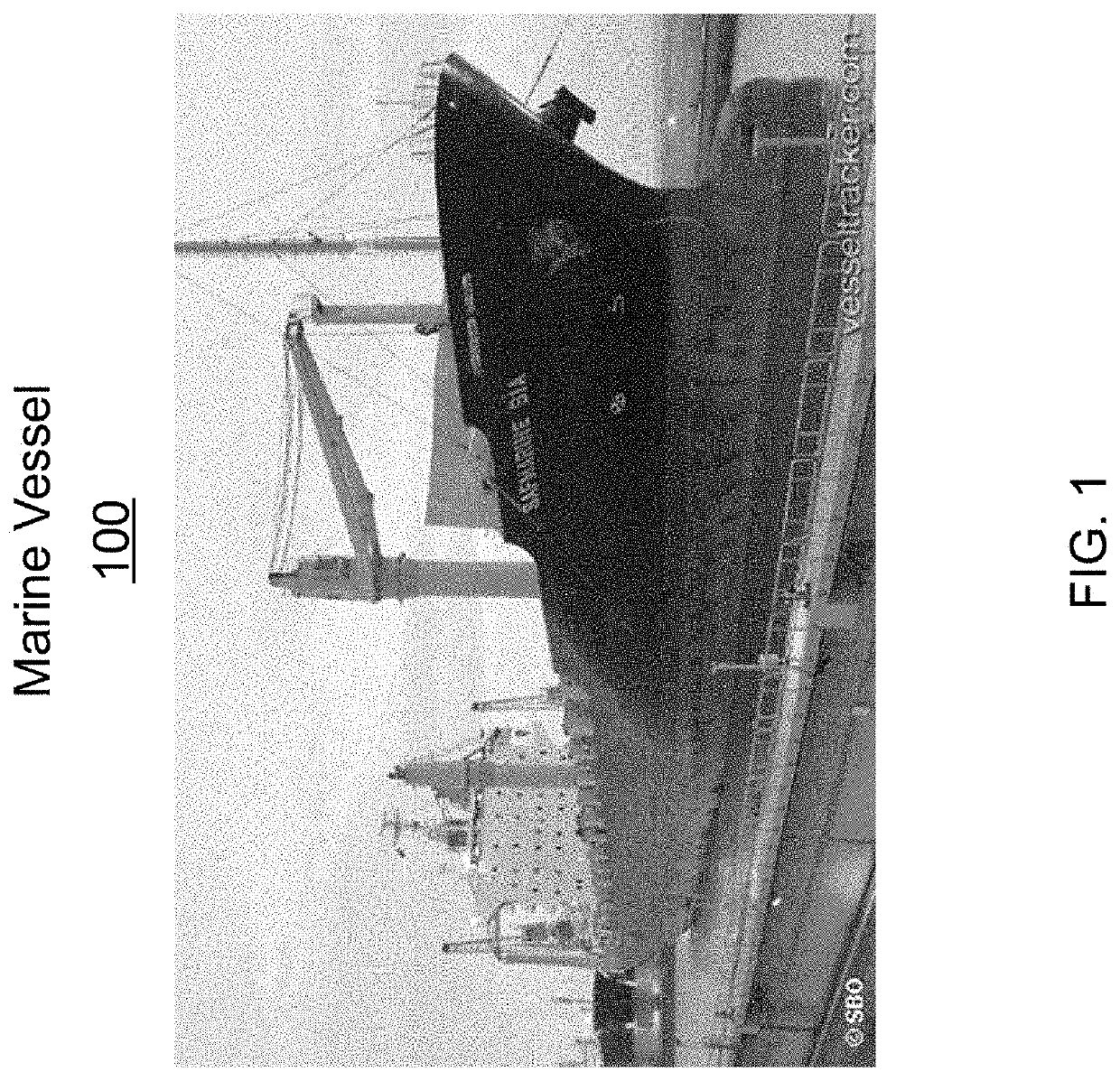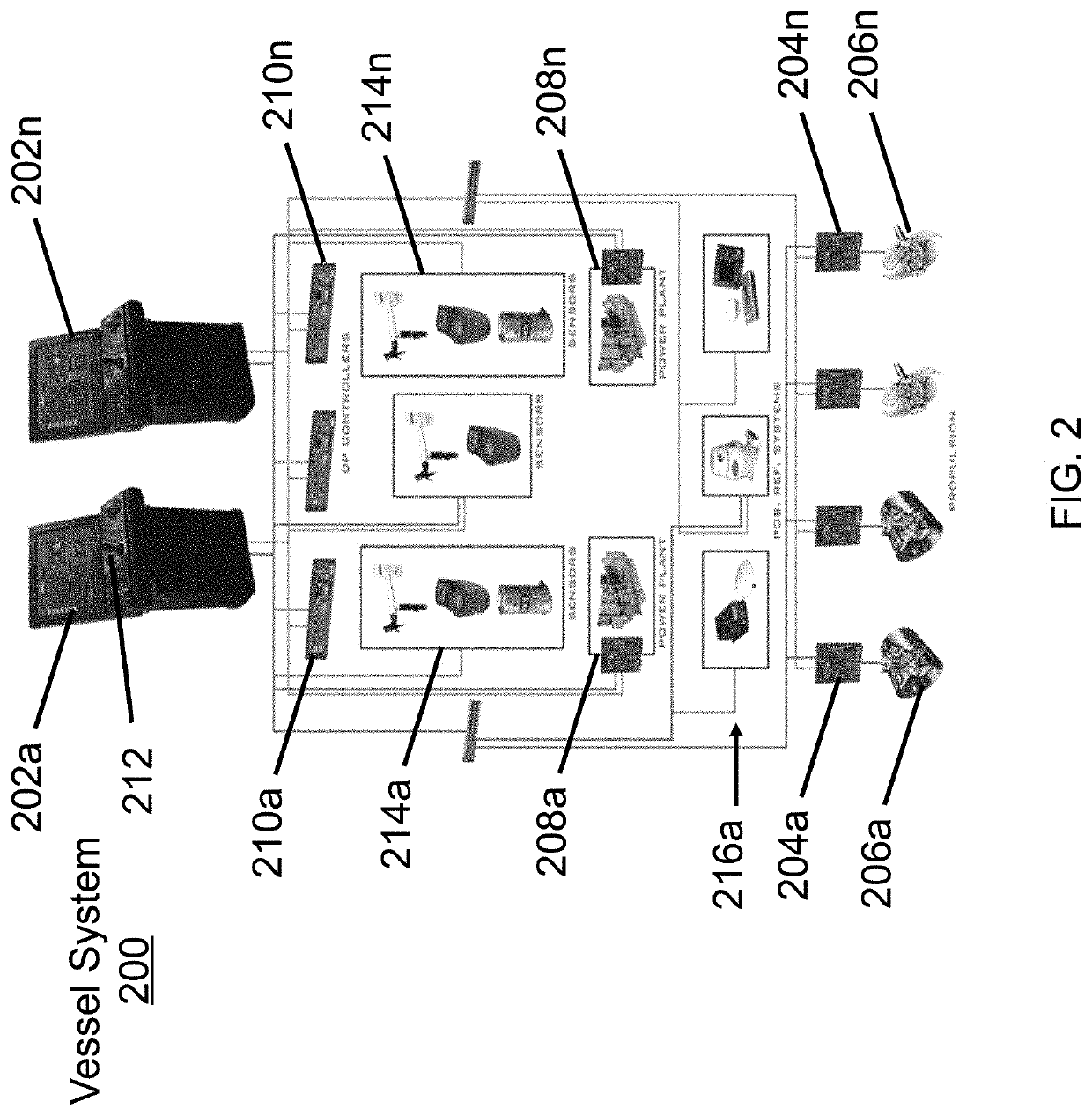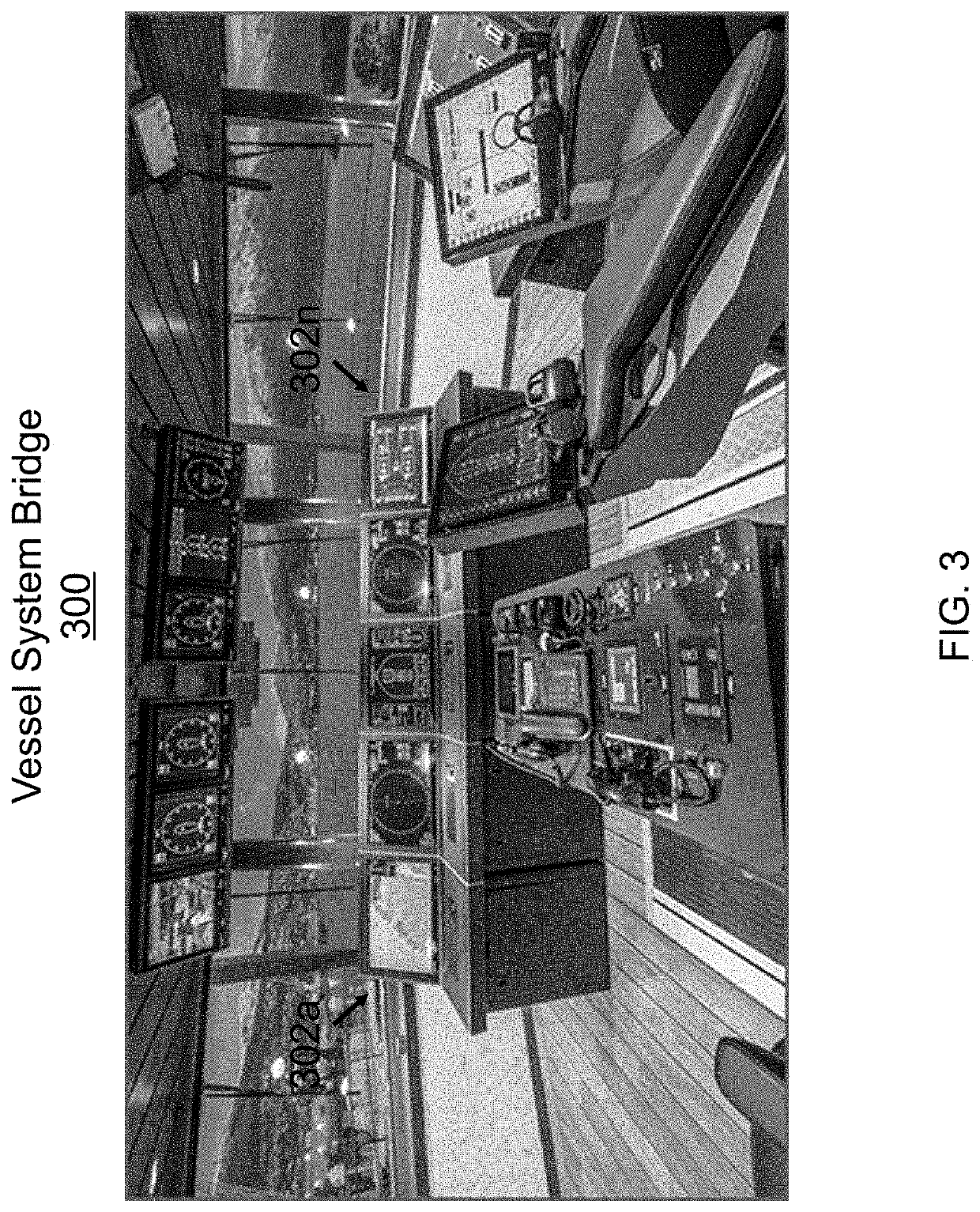System and method for optimizing fuel usage of a marine vessel
a marine vessel and fuel consumption technology, applied in vessel construction, navigation instruments, instruments, etc., can solve the problems of large amount of fuel consumed by marine vessels, difficulty in tracking system by operators, and inability to monitor each indicator to track the operation of each system, so as to achieve maximum fuel efficiency and reduce fuel consumption
- Summary
- Abstract
- Description
- Claims
- Application Information
AI Technical Summary
Benefits of technology
Problems solved by technology
Method used
Image
Examples
Embodiment Construction
[0037]Marine vessels, such as marine vessel 100 shown in FIG. 1, are used for shipping goods, people, and equipment around the world. Marine vessels operate in many different environmental conditions, including weather, temperature, and water temperatures. The environment may have an impact on the operation of the vessels, and systems and components that are used to operate and control the vessels. The marine vessels have vessel systems formed of electrical, mechanical, electromechanical, hydraulic, pneumatic, and other systems and components that are used to operate and control the vessels.
[0038]An illustrative vessel system 200 is shown in FIG. 2. In managing a vessel in which the vessel system is employed, an operator may interface with the vessel system 200 via user interfaces 200a-200n, such as those shown in more detail in FIG. 3, that are typically located on a bridge or control center of a vessel. The vessel system 200 is shown to include a variety of subsystems and componen...
PUM
 Login to View More
Login to View More Abstract
Description
Claims
Application Information
 Login to View More
Login to View More - R&D
- Intellectual Property
- Life Sciences
- Materials
- Tech Scout
- Unparalleled Data Quality
- Higher Quality Content
- 60% Fewer Hallucinations
Browse by: Latest US Patents, China's latest patents, Technical Efficacy Thesaurus, Application Domain, Technology Topic, Popular Technical Reports.
© 2025 PatSnap. All rights reserved.Legal|Privacy policy|Modern Slavery Act Transparency Statement|Sitemap|About US| Contact US: help@patsnap.com



